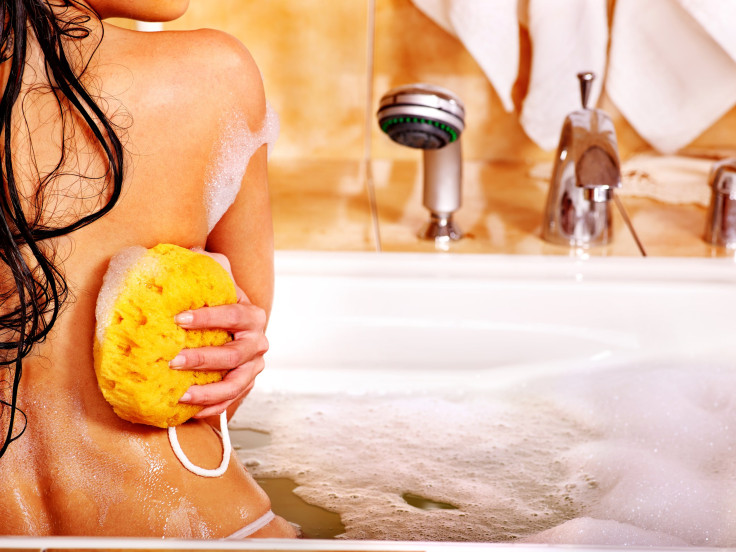4 Personal Hygiene Habits No One Practiced Until Recent History (And What Our Ancestors Did Instead)

Castles, jewels, and crowns? If you care at all about personal hygiene (and disease), medieval times would be your worst nightmare. As you read about the hygienic practices of yesteryear, Medical Daily hears your horrified gasps. But, instead of feeling smug, imagine yourself catapulted 300 years into the future: What would you think looking back on our common hygienic habits of today? While we may have access to toilet paper, we still live, breathe, and exist within a sea of chemicals, some of which are undoubtedly contributing to the high incidence of cancer and other diseases. Someday, perhaps, today will appear a dreadful cesspool to our future selves. It is also important to understand that in some impoverished regions of the world, these practices may still exist.
So enjoy these brief descriptions of hygienic practices from yesteryear, which will induce extreme gratitude. How lucky to be alive in a time and place where you — and your family, friends, and co-workers — are able to practice the current standard of personal hygiene!
Teeth
Let’s begin with teeth, one of the most common sources of personal judgment. In long ago times, even the wealthiest people had cavity infested, discolored choppers. To freshen their breath, the people of the Renaissance (1300 to 1700) commonly chewed herbs, while those with the most evolved dental hygiene rinsed their mouths with water after eating or even rubbed their teeth with a cloth to wipe leftover food particles from their mouths. They used toothpicks to clean their teeth, and when a rotting tooth bothered them, they arrived at their barber place of business, where the painful tooth was extracted with blunt instruments.
Advances were made in the years following the Renaissance; in the 1700s, artisans created the first dentures, gold crowns, and porcelain teeth. A dentist’s chair was developed and a dental foot engine, similar to the foot pedal of an old sewing machine, rotated a drill for cleaning out cavities. Pierre Fauchard, who died in 1761 and later credited as the father of modern dentistry, not only made fillings but also braces for straightening the teeth. He advocated using one’s own urine to prevent cavities; considering urine contains ammonia, this idea, though distasteful (no pun intended), is not entirely unreasonable.
Ahem, Waste
The practices surrounding so-called bathroom behaviors (our euphemism for urination, defecation, and menstruation) have improved substantially over time. All hail toilet paper! This sanitary innovation originated in China during the Middle Ages. Meanwhile, during the same time period in Europe, the bathroom habits of the wealthy would have included wiping themselves with wool or lace or hemp and the poor, well, they simply used their hands or cleaned themselves as best they could with rags, wood shavings, leaves, grass, hay, stone, sand, moss, water, snow, maize, husks, seashells, and fruit skins — essentially, whatever was handy and available given the country, weather conditions, or social custom.

In terms of where people defecated, that depended largely on social class. Poor people didn’t have toilets, and so they relieved themselves wherever they found privacy and then buried (others would hope) the waste. Sometimes the peasants defecated directly into rivers and streams. For royalty living in castles, a toilet meant a piece of wood covering a hole in the floor, which sent the waste directly into the moat. Heave ho! For middle class people residing in houses, a toilet amounted to a slab of wood with a hole in it placed on top of a bowl standing in a corner or recess. Chamber pots, kept under the bed, collected urine during the night. When necessary, bowls and pots were emptied into the cesspit generally located in the garden or cellar.
Menstruation involved the use (and reuse) of rags, washed as necessary, and for very poor women, well, just about anything they could lay their hands on. Ladies, it’s best not to think too deeply about this particular aspect of personal hygiene.
Bathing
During medieval times in Europe, bathing was viewed either as a form of debauchery or as an opportunity for the devil to enter your body. While those opinions shifted over time, many people continued to believe bathing was unhealthy and a way for disease, if not the devil, to enter your body. However, during the Black Plague, personal hygiene gained in popularity with people beginning to wash their hands in warm water, warm wine, or sometimes vinegar. It must be noted that bathing was expensive due to the high cost of firewood, and so most people shared their bathwater. Generally, men bathed first, followed by women, and then onto the children with the eldest first and on down to the youngest. This, then, is the origin of the saying, “Don’t throw the baby out with the bath water.”
Naturally, royalty bathed more frequently than most people. In their chambers, they had basins of water for washing their face and hands. Commonly, a separate room contained their copper bathtubs lined with linen, which would be filled with hot water by servants. Rarely did peasants find an opportunity to submerge themselves completely, though some possessed wooden barrels for that purpose. The poor were more likely to wash quickly with plain water and a rag, and, when luck would have it, scraps of soap, which had been brought to Europe from the East by knights during the crusades. Prior to that, people used the oils from flowers.
In cities, public bath houses served the people. The ruins of the Indus Valley Civilization located in present-day Pakistan include one of the earliest public baths; the size of municipal swimming pool, Wikipedia says, has stairs leading down to the water at each end.
The Home & Fashion
In days of yore, people covered their natural dirt floors with straws and rush, yet, they changed only the top layer. Naturally, these floors became a frequent source of infection and illness. Above their heads, a simple thatched roof provided cover on many a house, which allowed droppings from birds, small animals, and bugs to contaminate pretty much everything (including the beds). And yes, infestations of bed bugs were, well, let’s just say an everyday occurrence. During the Victorian era, women wiped down all their beds with kerosene, still bed bugs remained an insolvable dilemma until modern times and modern chemicals.
Lice and nits were also widely prevalent. To avoid these, the wealthy shaved their heads and wore periwigs. However, the wigs often became infested with bugs as well; still, a wig could be changed. Generally, men avoided removing their hats during a meal as a way to keep head lice from falling into their plates.

The fashion-conscious, including Queen Elizabeth I of England, used Venetian ceruse, a skin whitener, to give her skin a smooth, sleek, and pale cast. Sadly, this make-up contained poisonous lead, which seeped through the skin, damaging it, and causing hair loss as well. Long-term use resulted in death.
Some enlightened ladies feared their eyebrows might not be prominent enough for the heady tastes of their era. No matter. They simply set a trap, caught a mouse, and then glued pieces of the pellet to fill in the gaps in their brow. Voila!
Finally, to remove stains from their clothes, the fashionable set used a detergent made from ashes and urine.
On the bright side, to make up for deficits in home sanitation, people adorned their homes with flowers and fresh herbs. Frequently, they used perfumes and also nose-gays. A sachet of dried flowers and herbs pressed to the nose kept the nasty smells at bay while walking through a crowd.



























